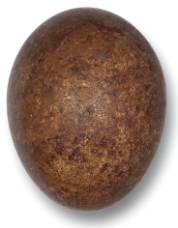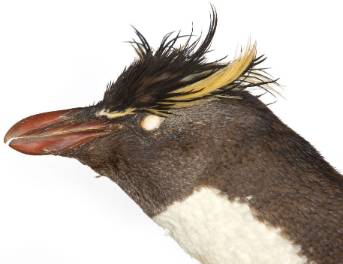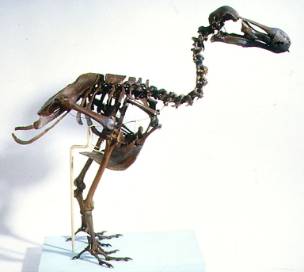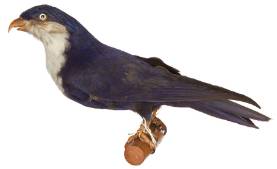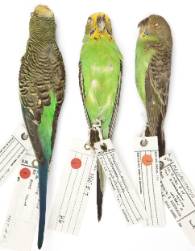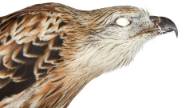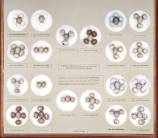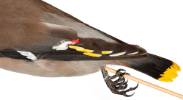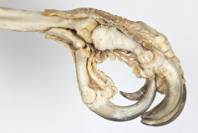Rare bird and egg specimens collected more than 100 years ago take the spotlight in an intriguing new exhibition, the Secret World of Museum Science, opening today, 16 May, in the Natural History Museum at Tring's Gallery 2. The exhibition is free and runs until 6 November.
Rare specimens in The Secret World of Museum Science exhibition opening today at our Tring Museum have helped scientists in their research. Left: Peregrine falcon egg similar to ones used to explain the dramatic decline of the species back in the 1960s. Right: Rockhopper penguin, Eudyptes chrysocome, feather samples have recently been analysed against live birds today to find out why there is a drop in population.
Our Tring Museum has the largest collection of bird specimens in the world and this new showcase will give us a glimpse not only of these historic, behind-the-scenes specimens and their stories, but of their importance to Museum research and science.
'The exhibition explores the relevance of what has been collected and identifed at Tring and demonstrates how the collection is being used for current scientific purposes' says Dr Robert Prys-Jones, head bird curator at Natural History Museum at Tring.
Another highlight in the exhibition is a rare composite skeleton of a dodo (left) Raphus cucullatus collected during the 1860s from the Mascarene Islands in the Indian Ocean. It is seldom seen on public display.
I asked Alice Dowswell the exhibition's curator how things were going with the installation:
'We’ve been working closely with the bird group curators to install all the specimens, including the fragile dodo skeleton. Staff members have been testing out the video unit, watching clips of interviews with our bird curators talking about some of the projects they and our specimens have been involved in including clips about Darwin’s mockingbirds, fraud in the collections and peregrine falcon eggs.
'We’ve also been having fun with our dodo dig - brushing away sand to reveal model dodo bones and comparing them to the real thing on display nearby.'
The exhibition includes games and four videos of bird research, historic and current, featuring Darwin's mockingbirds research, the restoration of the Mauritian ecoystem where the dodo became extinct, the Meinertzhagen collection fraud and peregrine falcon egg findings.
You can see one of these online on our website. Watch the Restoring the Mauritian ecoysytem home of the dodo video.
Find out about visiting Tring Museum
More about our bird research at Tring
Enjoy some more photos of specimens featuring in the exhibition. Select them to enlarge.
This Blue lorikeet parrot, Vini peruviana, from an island in southeast Polynesia in the Pacific Ocean, is one of the oldest specimens in the Tring bird collection. It was probably collected on one of Captain Cook's voyages between 1768 and 1779. That means it's at least 232 years old.Wild budgerigars, Melopsittacus undulatus, are small, streamlined parrots, the wild ancestors to pet budgies. There are many such specimens in the Tring collections. Budgerigars can see ultraviolet (UV) light and have patches of plumage that glow under IV.
Red kite, Milvus milvus, became extinct in England from 1871 but was introduced in 1989 in the Chilterns with a growing population today. This is the first specimen of this species in our collection from the Chilterns area since their re-introduction and was donated to the Museum after it was found dead on a roadside.
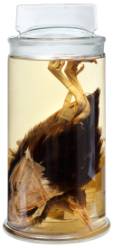
This is the only example of the extinct Fiji bar-winged rail, Nesoclopeus poecilopterus, preserved in spirit anywhere in the world, held in our collection.
Clutches of cuckoo and host eggs, like the nightingale and hedge sparrow used to research how cuckoo eggs match the host eggs
Beautiful tail feathers of the Bohemian waxwing, Bombycilla garrulus, carefully cleaned and preserved by our curators. This specimen is a recent addition to the collections and was presented to the Museum in the winter of 2010 after it collided with a window and died.
Specimens like this Steller's sea eagle, Haliaeetus pelagicus, claw shows the structure of the foot, with bones and tendons still in place



